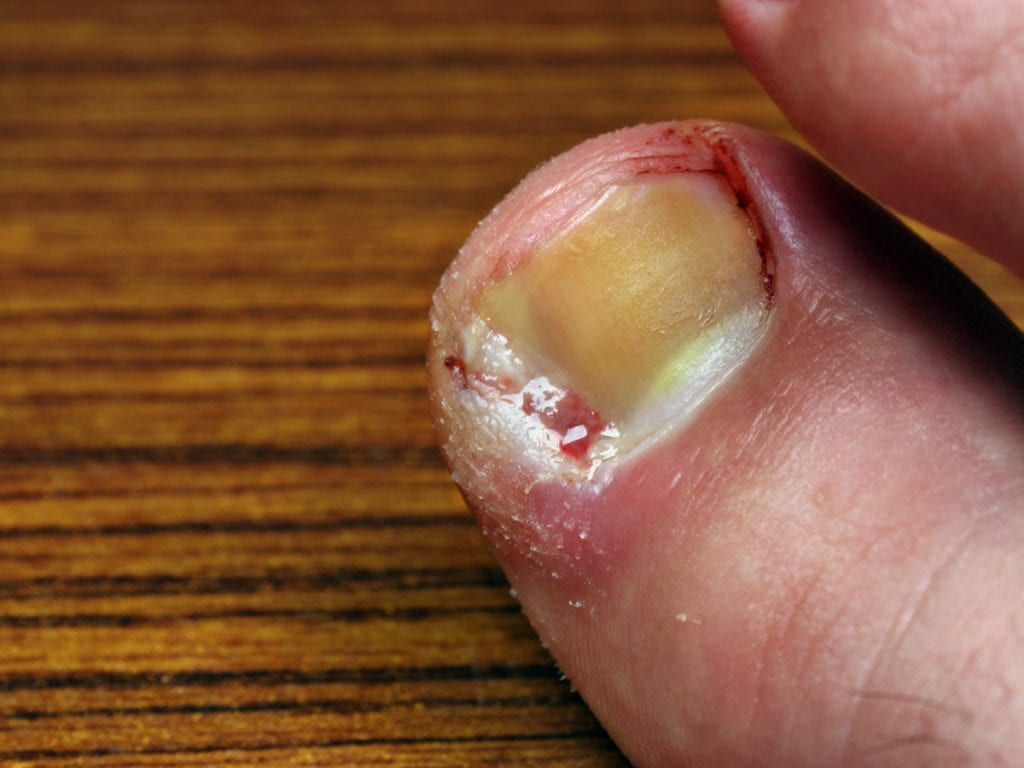Ingrown toenails are a painful condition caused by the toenail growing into the soft flesh surrounding the nail. In minor cases, the toe becomes tender, swelling painfully and turning red. In severe cases, an infection can set in requiring antibiotics and intervention by a physician. The big toe is the most common location for ingrown toenails to occur. In most cases, it’s possible for ingrown toenail sufferers to manage their condition on their own. A physician is only required when home care efforts have been unsuccessful.
What Symptoms Let Me Know I Have An Ingrown Toenail?
The most common symptoms of an ingrown toenail include:
- One or both sides of your nail being tender or painful
- The area around your nail turning red
- Your toe swelling up around the nail
- Puss or other signs of infection around the nail
How Can I Care For Or Prevent My Ingrown Toenail At Home?
There are steps you can take to avoid your ingrown toenail from becoming severe enough to require medical intervention. It starts with prevention. Preventing ingrown toenails starts by practicing proper nail hygiene, cutting your toenails straight instead of curved to match your toe shape. Toenails shouldn’t be allowed to grow beyond the tip of your toes, nor be trimmed back further than this point. Short toenails can grow into the tissue around your nail, especially when shoes cause pressure on them.
Properly fitting shoes are also essential, as toes that pinch or place pressure on your toes can cause ingrown toenails to occur. If you work in an area where damage to your toes is possible, be certain to wear proper protective gear in the form of steel-toed shoes. Those who suffer from diabetes should check their toes every day for foot problems, including ingrown toenails.
How Do I Know It’s Time To See The Doctor?
If you’ve been experiencing tenderness or painfulness in your toe for extended periods of time, or you have an ingrown toenail condition that’s recurring, it may be time to see your physician. Any sign of infection, such as pus, merits an immediate visit to your doctor. If you have diabetes, it’s critical that you visit a physician if you have any kind of infection or sore on your feet.

What Happens If My Ingrown Toenail Isn’t Properly Treated?
Once an ingrown toenail moves into the infection stage, it must be treated before it becomes life-threatening. The infection has the possibility of moving into the bone and causing a bone infection in patients who are otherwise healthy. Those who suffer from diabetes can experience even more severe repercussions, up to and including the amputation of the foot or leg from complications related to infections and diabetes. If your toenail has become infected, especially if you have diabetes, it’s time for a visit to your physician immediately.
If you have questions about ingrown toenail treatments or want to have your ingrown toenail looked at by one of our experts, give us a call at 1-803-283-2300 for an appointment today. You’ll be scheduled for an appointment and brought in for an evaluation. You can also stop in for a walk-in visit at our office at 1130 Hwy 9 Bypass W in Lancaster, SC, for immediate care at our urgent care center.


